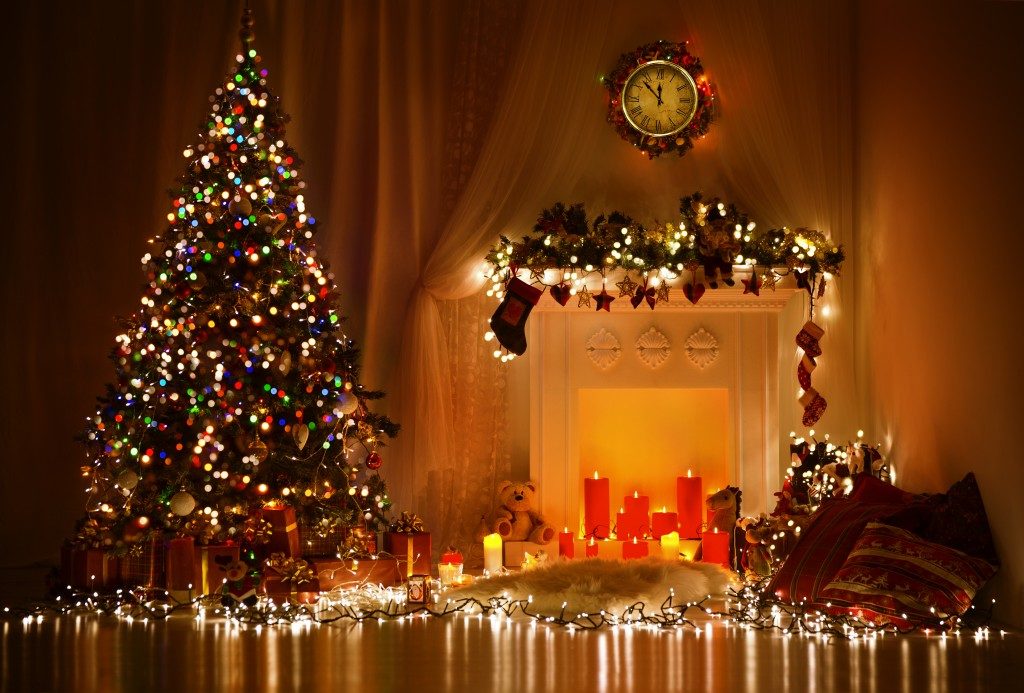When we talk about the winter holidays, we often envision cozying up near the fireplace near a Christmas tree, in a room filled with holiday-themed candles, and in a house adorned with lighting decorations while cookies or turkey is being baked in the oven. This may sound magical, but all those are listed among the top fire hazards during the holiday season according to the National Fire Protection Association (NFPA). Yes, the holidays can be quite an enjoyable time, but the season brings about their risks and hazards. As such, we’ll be taking a look at these winter holiday hazards and how to prevent them:
Christmas Tree Fires
The NFPA has noted an average of 170 home fires annually that started with Christmas trees, causing an average of 4 deaths, 15 injuries and approximately $12M in property damage. Majority of these Christmas tree fires are due to lighting equipment, while other Christmas tree fires have been caused by being too clause to another heat source such as a candle, furnace, or fireplace. As such, it’s important to keep your Christmas tree away from any fire source and make sure that you avoid buying cheap Christmas tree lights that are more prone to overheating, and avoid using old or damaged Christmas lights altogether. Switching to LED lights for your Christmas tree is relatively safer, and make sure you don’t overload your extension cord or socket. Better yet, some companies and businesses can professionally and safelyinstall holiday lights for your Utah home; some would even assist with removal and storage after the holidays are over.
Decorations
It’s been noted that US Fire Departments have responded to 800 home structure fires which started with decorations (excluding Christmas Trees) each year, causing an average of 2 fatalities, 34 injuries, and about $11M in property damage. Most of these fires are due to decorations being too close to another heat source such as a candle, stove, or fireplace. Similar to Christmas tree fire prevention, it’s best to keep your decorations away from open sources of fire.
Kitchen Fires
A kitchen fire is quite common during Thanksgiving, Christmas Day, and Christmas Eve when everyone is hectic preparing their celebratory dinner and meals. About 20% of kitchen fires involve decorations catching fire from a stove or cooking equipment, so it’s important to keep your decorations away from the kitchen altogether. It’s also important to always keep an eye out of the dishes you’re cooking, and never to leave unattended for extended periods, even when you’re slow baking or cooking dishes in the oven.
Candles
Home candle fires peak during the Christmas, New Year Day, and New Year’s Eve. Candles can directly cause decorations and Christmas trees to be lit on fire. So it’s best always to keep candles away from anything flammable, whether it’s decorations, Christmas Trees, books, drapes, and other objects. You should also make sure to blow out all the candles before going to bed, or when going outside.
Firework Fire Hazards
Lastly, firework fires become quite common between December 30 and January 3, when people are celebrating the New Year. If possible, avoid the use of firework altogether, or have your family enjoy a fireworks display operated by skilled pyrotechnicians.
Conclusion

The holidays present certain unique risks to homes, and it’s important to be aware of all these possible winter holiday fire hazards to take the necessary steps to prevent them. So make sure to take all these preventive measures so you and your family can celebrate the holidays with peace of mind.
